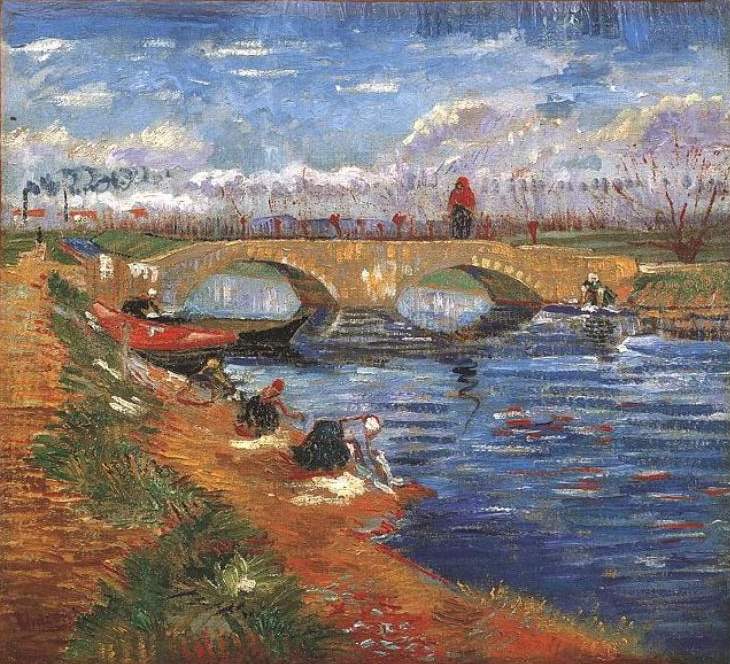The Gleize Bridge over the Vigneyret Canal, 1888 by Vincent van Gogh

Van Gogh left Paris in February 1888, and arrived at Arles in the south of France, full of hope for a new start in the peaceful rural community. He was initially greatly taken with the beauty of the area. The strong Mediterranean sun lent everything a particular vibrancy that had been missing in Paris, and it is likely that Van Gogh drew parallels between this and the effect that Morocco had on Eugene Delacroix's (1798-1863) art.
The move to Arles again signaled a development in Van Gogh's art, and his palette became increasingly bright and brilliant, as can be seen here. He also began to see colour in terms of symbolic significance, and the use of symbolism crept quietly into his work. These first works done at Arles exhibit a great enthusiasm for the area, which manifests itself through the free brushstrokes and application of paint There is a fluidity here through the surface of the paint that suggests the subject was painted quickly, but exactly as the artist wanted. There is no hesitation and every brushstroke is definite and pertinent to the overall composition,




















